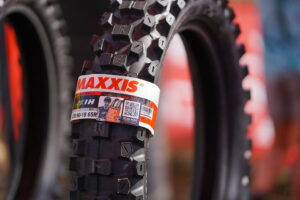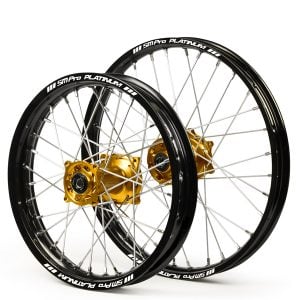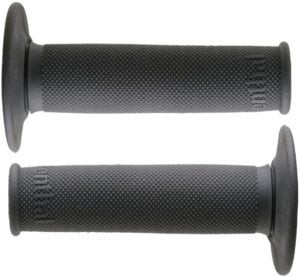We are reader-supported. When you buy through links on our site, we may earn an affiliate commission. Learn More…
The Best Gas Air Compressor for Portable Efficiency for Motocross 2024
-
My Choice
 PD1000, Puma 12 Volt
PD1000, Puma 12 VoltPremium Pick
 Viair 380c
Viair 380cImagine you’re in the market for a superhero that can power your pneumatic tools with unmatched efficiency and portability. That’s right – we’re talking about the ultimate air compressor gas-powered! In this blog post, we’ll help you find the best one for your needs, compare top brands, and even share some laughs along the way. Buckle up and enjoy the ride!
Key Takeaways
- Choose the right gas air compressor and equip it with superpowers!
- Get ready to rock out with a wild pneumatic experience.
- Put on your safety gear before you unleash its power!
Quality Assurance by Motocross Advice Test Crew
Here at Motocross Advice, we believe in delivering only the best to our readers. That’s why every gas air compressor we recommend has been rigorously tested by our dedicated Motocross Advice Test Crew. Our team of experts put each product through a series of tests to ensure it meets our high standards for power, efficiency, and durability. We understand the importance of reliable equipment in your motocross adventures, and we work hard to ensure the products we recommend won’t let you down.
Choosing the Right Gas Portable Air Compressor

Selecting the perfect gas air compressor is like picking a superhero sidekick. You need to consider its power, tank size, and portability for efficiently operating pneumatic tools. The gas air compressor is so mighty, it’s practically a superhero itself – and with special offers, it becomes even more attractive. The tank size is big enough to fill up an elephant’s trunk, and we have only a handful left in stock. Portability is key, too – you want a compressor that’s so portable, you can practically carry it around in your pocket.
For those interested in purchasing, the Limodot portable Air Compressor offers two excellent deals for both used and new models, priced at only $148.49. The price range for a gas air compressor typically falls between $999.99 and $1,199.00. Once you’ve made your decision, you can expect your new sidekick to arrive within 5 to 7 days. And don’t forget about the bargains – you can save a whopping $70.00 when you checkout. But act fast, as there are only a few gas air compressors left in stock. Filling up your gas air compressor costs a mere $83.99 – pocket change for portable efficiency.
Top Gas-Powered Air Compressors on the Market

With the important features in mind, we can now examine the top gas-powered air compressors currently on the market. The top contenders are:
- Metabo HPT portable Air Compressor – boasts a customer rating of 4.7 out of 5 stars on Amazon, providing easy access to customer reviews and product information. It is also available for international shipping.
- Milwaukee M18 FUEL 2 Gallon Compact Quiet Compressor
- Ingersoll-Rand SS3F2-GM Garage Mate Compressor
Next up is the Milwaukee M18 FUEL 2 Gallon Compact Quiet Compressor, boasting 10 compelling deals on Amazon. The most economical offer is a mere $297.11. You can sort the offers by price, seller, or shipping options and nab the best deal. The list price on Amazon is a whopping $370.00, but make sure to check the server for any updates on pricing or availability.
Last but not least, the Ingersoll-Rand SS3F2-GM Garage Mate Compressor will set you back a cool $1,149.99. With these top-notch options, you’ll be the envy of your neighbors and the hero of your pneumatic tool arsenal.
Benefits of Using Gas Air Compressors

Every superhero has their unique powers, and gas air compressors are no exception. Their secret weapon is their versatility, portability, and ability to work in remote locations without electricity. A gas-powered air compressor uses gas instead of electricity or diesel fuel, making it perfect for situations when you need more oomph than your regular electric compressor can provide. Gas-powered rotary screw air compressors and two-stage compressors are the preferred choice for construction, landscaping, and irrigation applications – truly the superheroes of the compressor world.
The versatility of gas air compressors comes from their portability, power, and wide-ranging applications across various industries. So whether you’re building a skyscraper or just inflating a giant bouncy castle, a gas air compressor will have your back.
Gas vs. Electric Air Compressors: Pros and Cons
Now, let’s delve into the comparison between gas and electric air compressors. In terms of power output, gas compressors have horsepower ratings and CFM capacities that make them the preferred choice for heavy-duty applications. Meanwhile, electric compressors are easy to operate and won’t take up too much space, making them more suitable for lighter tasks.
When it comes to noise levels, gas air compressors are like a rock concert – loud and proud! Electric air compressors, on the other hand, are like a soothing lullaby – much more subtle and quiet. As for the environmental impact, gas air compressors are the party animals of the compressor world, emitting chemicals and fumes into the environment. Electric air compressors, however, are the responsible adults – they don’t emit any of that stuff, making them better for Mother Nature.
Maintenance Tips for Gas Air Compressors
Consistent maintenance is key to preserving the optimal performance of your gas air compressor. Changing the oil might be a bit of a juggling act, but it’s essential – depending on the manufacturer’s instructions and how often you use it, the oil might need to be swapped every 3 months or after 3000 hours of operation.
Ensuring the air filter is clean is another vital step to maintain the smooth operation of your gas air compressor. Here’s how to clean the air filter:
- Use a gentle cleaning agent or an approved cleaner specific to the filter material.
- Clean the filter by moving your hand across the fins in a strumming motion or using compressed air.
- Make sure to check and replace the inlet air filters regularly to maintain efficiency.
Lastly, inspect the belt of your gas air compressor by following these steps:
- Remove the belt guard.
- Check for any signs of wear, cracks, or damage on the belt.
- If you find any issues, remove and replace the belt.
- Align the new belt properly.
- Reattach the belt guard.
Safety Precautions When Operating Gas Air Compressors
Prioritizing safety is paramount! Operating a gas air compressor requires the following safety measures:
- Adequate ventilation
- Secure grounding
- Appropriate protective equipment, such as safety goggles and gloves for eye and hand protection
- Earplugs to protect your ears from the loud machinery
Operating gas air compressors comes with potential hazards like carbon monoxide poisoning, toxic fumes, electrical hazards, loud machinery, flying debris, and high-pressure hoses and valves. Proper ventilation ensures you don’t inhale any noxious fumes, and grounding prevents electrical shocks. Wearing protective gear shields you from flying debris and loud machinery, ensuring you stay safe while you save the day with your gas air compressor.
Popular Accessories for Gas Air Compressors
To maximize the potential of your gas air compressor, consider investing in reliable accessories. The must-haves include:
- Air hoses
- Air couplers
- Blow guns
- Filters
- Dryers
- Pressure regulators
- Lubricants
- Paint guns
These accessories are essential for keeping your portable air compressor looking fly.
The right air hose can help your gas air compressor show off its skills by sending pressurized air or other gases to any place it desires. It’s like a superpower that lets the compressor extend its reach and power tools or equipment far away. And if it uses the right size and type of air hose, it can even increase the airflow and efficiency of the compressor.
Additionally, enhancing your gas air compressor with attachments such as:
- air hoses
- air couplers
- blow guns
- filters
- dryers
- pressure regulators
- lubricants
- paint guns
With these accessories and a clear cart, your gas air compressor will be ready to apply its power to tackle any job, making you the hero of your pneumatic tool arsenal, paying attention to the details. For more information and to obtain permission for usage, visit our website at https://motocrossadvice.com or give us a phone call.
Buyers Guide for portable air compressor products
It has been a long week at work. You wake up to perfect riding conditions and the dirt bike is waiting in the garage. You spring out of bed, excited as a kid on Christmas morning. After a hurried breakfast you grab your kit and head for the garage. It’s time to ride!
As you wheel the bike out your spider senses tell you something is wrong. The sound of the tyres and handling of the bike is all off. A quick glance down confirms your worst fears. Staring back at you with its menacing grin, the weekend riders curse. A flat tyre. Whatever bike you ride, competition motocross, ATV, Enduro or dirt bike, a flat tyre is never welcome.
When riding time is limited, a flat tyre needs fixing fast!
The internet is awash with cheap, battery operated, 12v and mains powered portable air compressors. The $30 price tag is extremely tempting. But are they up to the Job?
Is there such a thing as a reliable cheap air compressor?
Before you go clicking add to basket and spending your hard earned cash, there are a few things you might like to consider. Firstly, ask any tradesman or professional mechanic and they will agree; A quality tool, made of hard wearing and reliable components is not cheap.
Can a $30 motorised air compressor really be of a high enough quality to use for adventure sports? Will it stand up to the rigours of being thrown in and out of the van for race meetings? More to the point, will the reliability be there when you catch a flat 40 miles from the nearest garage on your favourite dirt track?
The answer that we instinctively know to be true is that a cheap compressor is unlikely to last too long. So how come other comparison sites offer them as suggestions for the motocross and off-road sport market place? Also, how do they have so many good 5* reviews…
I decided to dig a little bit deeper into the cheap portable air compressor market and read some of the reviews in more detail. It turns out there is a consistent problem when using cheap air compressors for adventure sports purposes. They break down – a lot!
There is always an exception to the rule. A cheap air compressor may be fine if you ride a few times a season and have one flat tyre every blue moon. If you ride demanding terrain, week in week out, you may find you are asking more of your tools. Cheap air compressors will be ideal for those pumping up the odd dinghy, air bed or mountain bike tyre. If you are a lap down at a competition ride, or wheel nuts deep in the tacky stuff, you will want to know your tyre pump is ready to go if you catch a flat!
As I said earlier, our research threw up some very interesting reading. Read on to learn a thing or two about online reviews. I hope this helps you in purchasing online in general.
Reviewing the reviews of cheap air compressors
A detailed read of the top ten cheap air compressors recommended by a number of comparison sites revealed the following details:
Many cheap portable air compressors had more than 10% 1* reviews.
The consistency of these one star reviews was astounding. Almost all of them said that the products had failed out of the box, or within the first hour of use. This was across a wide range of manufacturers so there is no common denominator except “cheap”. Often these had been replaced without question, but the worse culprits were repeat offenders.
The same air compressors had a lot of 3* or lower due to performance
The most common complaint we found was that the pump simply took too long to blow up a tyre. More than one customer quoted an inflation time of over 40 minutes at 60 psi. There were multiple instances from multiple manufacturers that reported over an hour to inflate a tyre! I don’t know about you, but that is simply not acceptable when there is riding to be done. This was just the inflation of the tyre. That did not include removing or replacing a wheel. For me this is a warning bell.
The very same air compressors had lots of 5* reviews
Confused? I was too. So I started reading lots of 5* reviews of cheap tyre pumps. A pattern started to emerge. It seems the people that are REALLY happy with their budget air compressor are split into three main camps. The first hardly ever use them and the compressor is just a peace of mind addition to the garage or car boot in case of an emergency. That’s fair enough.
The second group are those that use the air compressor to blow up lilo’s, small dinghies, kids bike tyres and for the odd DIY job. (Even some of these people appeared in the 1* it broke in an hour category). It is the final group that are the most interesting. These are the group of people that are clearly fictional reviews purchased en-mass to re-establish the credibility of a given product. Now this may shock you, but not all 5* reviews are the real deal. As this is important for any consumer to know, I have provided a little guide to spotting fake reviews.
Spotting A Fake 5* Air Compressor review
1. The review sounds wrong. When you start reading a lot of reviews as I do, you can immediately see one that has been paid for. They are often written by struggling writers. This means that the language and detail do not fit the product and circumstances. Overly elaborate details and ridiculous scenarios are a dead give away.
2. How many old ladies does it take to pump a tyre up? The old lady factor is common across a lot of dodgy 5* reviews. You would be astounded at the number of old ladies, (70 and over according to four I read about air compressors), who are so moved by the experience they decide to write a review. Who knew that the take up of e-commerce and the use of online reviews was becoming so popular among old ladies? I mean, you can always trust an old lady right? Oh. Wait a minute…
3. The passionate retort. This is my favourite. A product suffers with a persistent and known fault. All of a sudden there is a huge rush of people who feel compelled to write in and counteract that very problem with gushing reviews stating word for word that their particular “widget” didn’t show any signs of the problem. Really? Is that what real people do?
OK, A lot of 5* reviews are just that. Honest and reliable. But how can you build an honest picture when some retailers and manufacturers are employing fiction writers to support their products?
I suggest read all of the 3* and below reviews first. Build a picture of the common experiences people are having. Only then should you read the good stuff. 15 minutes of review reading and you will start to see the fake ones sticking out like a sore thumb.
When is a 1* review good?
Yes. A 1* review can be really good news.
If the majority of 1* reviews on the product you are researching are clearly because the person has bought the wrong product then you are fine to proceed. The single biggest issue with air compressors is that people have bought a small portable compressor to do an industrial job.
Some purchasers required constant run times. (12 hours in one case). So relax. As long as your favourite portable compressor doesn’t have multiple regular reviews identifying a known manufacturing fault, you can buy with confidence. All you need to do is get that tyre pumped up fast and jump back on your bike. Make sure it can do that job and don’t worry about bob the builder who is trying to put a house up with it.
One thing is for sure. In a two hour period of reading reviews of cheap air compressors and tyre pumps, under $50, I did not find a single positive review from a serious adventure sport enthusiast. I found literally hundreds that reported the products would not pump up a tyre. That is very significant information.
Top 10 safety tips when using a air compressor
- Check the manufacturers specifications on your tyre. An under or overinflated tyre can cause damage to you and your bikes performance.
- Always wear your safety goggles when inflating a tyre. Especially if the tyre is dirty. Compressed air can propel debris at a very fast speed.
- Do not blow compressed air into your hand, or any other exposed skin. A compressed air pump can cause air bubbles in your blood stream if it is blown into the skin. This is known as an embolism and it can be very serious, even fatal. Never use compressed air to clean dirt off your skin.
- Never inflate a tyre or object that is showing signs of deterioration, side wall damage or general splitting of the rubber compound. An exploding tyre can cause a lot of damage.
- Never inflate a tyre without a gauge fitted in the line. If the compressor you purchase requires an optional pressure gauge, buy it. Guessing can lead to explosion.
- Never inflate a tyre by holding the valve connector in place, for example if it is broken. Always replace a broken connector.
- Never jam a control valve open in an attempt to allow inflation without a person present.
- Never use the air compressor as a gun to fire debris or objects at another person. Flying debris can travel upwards of
- If you are concerned that a pipe has become blocked or deteriorated in any way, immediately stop using it and replace with a new one. Splitting pipes can whip, breaking bones or blinding eyes.
- Always make sure your air tank is regularly drained if you have one fitted. A tank with water in and can build up to a pressure beyond the capability of the material and explode.
Summary
In this blog post, we’ve explored the world of gas air compressors, from choosing the right one to maintaining it for optimal performance. We’ve compared top brands, discussed the benefits and drawbacks of gas and electric compressors, and shared some essential safety precautions and popular accessories.
Now that you’re equipped with all this knowledge, you’re ready to find the perfect gas air compressor to power your pneumatic tools and become the superhero you were always meant to be. Good luck, and remember – with great power comes great responsibility!
Frequently Asked Questions
What gas is used in portable air compressors?
Say goodbye to electricity bills and hello to natural gas portable air compressors – they use natural gas to power the air compression process, so you can keep your operations running smoothly and efficiently.
Do air compressors use natural gas?
It looks like air compressors can indeed be powered by natural gas! So whether you’re wanting to power up with natural gas or some other type of fuel, there’s an air compressor out there for you.
Are gas air compressors better?
Looks like gas air compressors may just have the edge; they’re better for outdoor use and don’t require access to electricity. So, if you need an air compressor, you should definitely consider a gas-powered one!
What factors should I consider when choosing a gas air compressor?
When choosing a gas air compressor, take into account its power, tank size, and portability to ensure you have the perfect machine for powering your pneumatic tools. So don’t just pick the first one you see – get a compressor that’s right for you!
What are some top gas-powered air compressor brands?
If you’re in the market for a gas-powered air compressor, look no further than Metabo HPT, Milwaukee M18 FUEL and Ingersoll-Rand SS3F2-GM Garage Mate Compressor – all of which offer plenty of power and reliability.







Be the first to comment